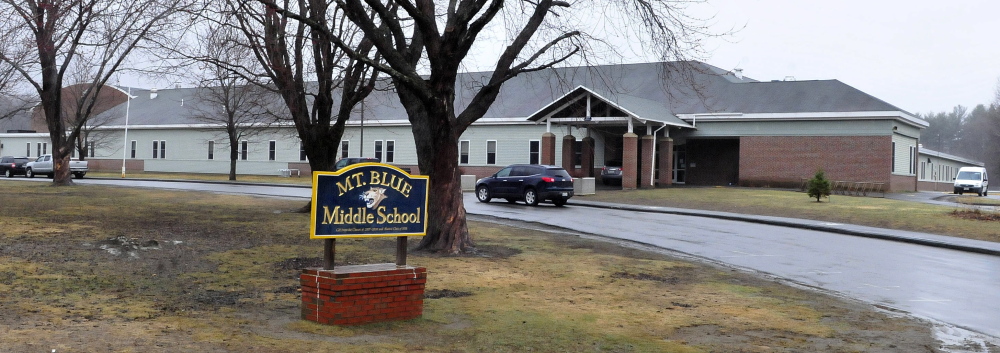Social problems in the home, including poverty, drug use and violence, along with better ways to identify and respond to learning disabilities have contributed to a 35 percent increase in students needing special services at Mt. Blue Regional School District over the past seven years, according to school officials.
Superintendent Tom Ward said the increased need for special services, which ranges from help reading to behavioral therapists to social workers, is one of the largest changes in recent years in the Farmington-based school district’s educational landscape.
Fourteen percent of students in the district were eligible for special services in 2007. The figure rose to 19 percent this school year, in a district of about 2,240 students.
WEIGHING THE OPTIONS
As the school board enters deliberations on the budget this week, many of the proposals it will consider center on providing increased special education needs.
A third school social worker is being proposed. Two additional special education teachers are requested for the Mt. Blue Middle School. A committee has been formed to weigh long- and short-term solutions to the increased space requirements of special education programs at the middle school. One short-term option proposes portable classrooms for the school.
In the 2013 and 2014 school year, the district added a day treatment program to support students with behavioral and mental health problems and help them transition back into the regular classroom. Along with academic work for the 33 students now in day treatment, the program involves therapeutic work, social work and group work.
“It’s for obstacles to learning that aren’t academic in nature but are more mental health in nature,” said Christine Gatto-Shea, director of special services for the school district.
The other option, out-of-district placement, can cost $50,000 to $100,000 per student per year and the placements can be as much as an hour and a half away, Ward said.
“By us having day treatment program in the district rather than having our students placed out of district, it’s conservatively saving about $560,000 to the district every year,” Ward said.
One of the budget challenges for special education, he said, is that it involves a closer adult-to-student ratio than a general education classroom.
“We’re seeing an increase in the number of students who need one-on-one support from the time they get off the bus to the time they leave,” he said.
To respond to these challenges, Gatto-Shea said, the district is also adopting new educational tools.
One tool is a multi-tiered response system called Response to Intervention. The approach involves early identification of learning and behavioral needs and creating interventions tailored to those needs. The intensity and duration of interventions are based on individual student response to instruction with the goal of having the student in general education for as much of the time as possible.
If the student needs help only with reading, and needs it for a few months to learn the skills to keep up in a regular classroom, an intervention plan is tailored to that need.
Another approach used for the past five years is the Positive Behavior Intervention and Support System, which Ward said has helped “tremendously.”
Positive behavior interventions include anything from helping a child learn how to walk down the hall to teaching good classroom behavior.
Ward said such tools are necessary to help students gain the social skills needed to participate fully in school. In some ways, they are tools that replace the roles once taken by parents.”There’s less parental guidance in the home for children growing up, and that’s why we have to take on some of those responsibilities,” Ward said.
THE ROLE OF POVERTY
Poverty is the root of many of the problems the school is trying to address, and Ward said understanding poverty helps them look holistically at the changes they are seeing, Ward said.
Gatto-Shea said there is a correlation between the increase in the number of students qualifying for free or reduced-price lunches and the number of students needing special services.
In October 2000, 33.43 percent of district students came from households with incomes that qualified for free or reduced-price lunches, according to state education data. As of October 2014, 53.7 percent of district students qualified.
“It’s an issue of poverty, but also all the stuff that comes with poverty. Kids come to school not ready to learn. Their parents are socio-economically squeezed. They’re worried about keeping their job. They’re worried about heating their home. They’re worried about feeding their kids,” Gatto-Shea said. “If you’re talking about food or doing homework, food has to take precedence, and we see that effect.”
ENCOURAGING STUDENT ASPIRATIONS
With a $20 million GEAR UP grant facilitated through the University of Maine at Farmington, the school will be working with students starting in junior high school and will take a multi-faceted approach to help the students think bigger about what they can do after high school.
Gatto-Shea said that beyond the need to add special education staff, ,general education teachers need support to help the students with their learning, behavioral and mental health needs.
Send questions/comments to the editors.


